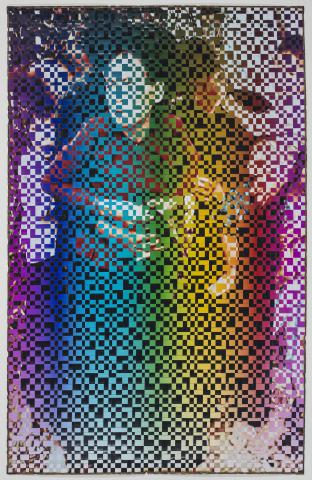
EUGENE, Ore. -- (September 17, 2018) – The Jordan Schnitzer Museum of Art on the University of Oregon campus presents ”Reframing the Fragments: The Best We Could Do,” the museum’s third annual “Common Seeing” exhibition. On view now through February 17, 2019, the exhibition features artists from different places, contexts, and generations that use personal reflections and storytelling to create their work. “Reframing the Fragments” is held in conjunction with the 2018 Common Reading selection, “The Best We Could Do,“ Thi Bui’s illustrated memoir about one family’s journey from their war-torn home in Vietnam (Việt Nam) to a new life in California.
“Common Reading at UO is a year of conversation around a shared book,” says Cheryl Hartup, JSMA Associate Curator of Academic Programs and Latin American Art. “This exhibition expands upon several of the themes in Bui’s memoir. The art selected for this year’s Common Seeing exhibition is diverse in media and intent, aimed at generating dialogue around what we have inherited and what we will pass on to future generations.”
“Reframing the Fragments” features the work of artists from the Vietnamese diaspora and of Vietnamese descent living in the United States and Vietnam (Việt Nam). Artists Thi Bui, Binh Danh, Dinh Q. Lê, and Phan Cẩm Thượng experienced the anguish and chaos of the Vietnam War, also known in Vietnam (Việt Nam) as the American War. Their works embody the complex sensations related to remembering and forgetting, tradition and innovation, and trying to make sense of fragments of memory and history. They address the impact of war both environmentally and culturally. Ann Le is a first generation Vietnamese American to immigrant parents. Growing up, she heard the collaborative memories of her mother, father, and sister, and her photomontages bridge truth and fiction, separation and reconstruction.
Made in the 1960s, Violet Ray’s collages of advertising and photojournalism from the pages of Life magazine and Nelson Sandgren’s lithograph criticize the United States’ involvement in the Vietnam War. Their images, as well as Matthew Picton’s works “Apocalypse Now #1” and “The Mekong River, Apocalypse Now #2,” on view in the JSMA’s Artist Project Space through December 30, encourage viewers to think critically about colonization and conquest as they relate to the Vietnam War.
“Reframing the Fragments” is supported by the Ballinger Endowment.
About the Jordan Schnitzer Museum of Art
The University of Oregon's Jordan Schnitzer Museum of Art is a premier Pacific Northwest museum for exhibitions and collections of historic and contemporary art. The mission of the museum is to enhance the University of Oregon’s academic mission and to further the appreciation and enjoyment of the visual arts for the general public. The JSMA features significant collections galleries devoted to art from China, Japan, Korea, Europe, and the Americas as well as changing special exhibition galleries. The JSMA is one of seven museums—and the only academic art museum-- in Oregon accredited by the American Alliance of Museums.
The Jordan Schnitzer Museum of Art is located on the University of Oregon campus at 1430 Johnson Lane. Museum hours are 11 a.m. to 8 p.m. Wednesdays, and 11 a.m. to 5 p.m. Thursdays through Sundays. Admission is $5 for adults and $3 for senior citizens. Free admission is given to ages 18 and under, JSMA members, college students with ID, and University of Oregon faculty, staff and students. For information, contact the JSMA, 541-346-3027.
Contact: Debbie Williamson Smith, 541-346-0942, debbiews@uoregon.edu
Links: Jordan Schnitzer Museum of Art, http://jsma.uoregon.edu





